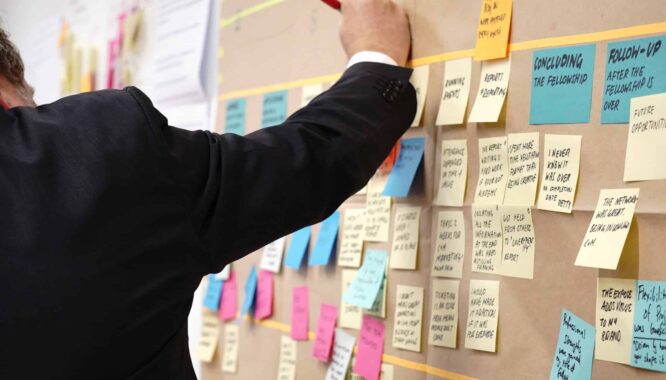
9 min
Already Have an HCM Cloud Solution? Here’s What’s Next for Digital HR
Written by
Thanks to the ever-evolving technology that we have at our disposal today, the workforce has become more diverse, global, mobile than we have ever seen before. Still, business leaders are looking for ways to optimize the workforce in other ways such as expanding business units, mergers and acquisitions as well as promoting digital transformation. In fact, executives count on digitalization to improve the performance of their workforce, produce cost savings and improve their overall competitiveness.
The role of an HR business partner has evolved from simply identifying, attracting and retaining talent to supporting business initiatives that foster an innovative and productive workplace. In order to achieve this, HR teams are turning to digital tools that will deliver a reduction in costs, improved employee productivity and better data-driven insights to all their stakeholders.
The first step in supporting the workforce through this transformation is to modernize your HR systems. More specifically, it means taking a look at your current HR ecosystem and assessing whether your current human capital management (HCM) cloud solution is delivering the functionalities and tools needed to optimize the employee experience and drive desired business outcomes.
Related articles:
The Future of HCM Technology: Closing the Functionality Gap
Future of Work: Trends and Insights of HR Management
What is an HCM Cloud Solution?
If you already have an HCM cloud solution in place, you are familiar with the contribution such system can make to your HR function. An HCM cloud system is a solution that allows HR professionals to plan, manage and streamline HR processes. In addition, it embodies the employee experience by providing all the services that employees need as they progress through the employee lifecycle. The main goal is to deliver efficient, compliant and secure HR services to all employees on a consistent basis.
An HCM cloud solution generally includes an array of modules that function to offer efficiencies and automate certain HR procedures. These solutions consist of a Core HR module where payroll is processed for all employees and employee records are housed. Additional modules could include benefits administration, recruiting, onboarding, performance management, time and attendance management, training, health and safety, employee self-service and more. Most HCM cloud solutions also have analytics tools that allow end users to create and monitor KPIs and metric dashboards, compare them across locations or departments, and build data models to predict future trends.
Why Companies Invest in HCM Cloud Solutions?
HCM cloud solutions provide many advantages such as digitizing HR processes and improving the productivity of HR departments. For example, the capacity of business processes such as benefits administration, performance management and recruiting efforts are increased thanks to accessibility across multiple devices and workflow automation. As a result, businesses often achieve cost reductions, a more productive workforce and better quality of work life. For this reason, many organizations choose to invest in and implement an HCM cloud solutions.
Today, the majority of HR SaaS (software-as-a-service) vendors offer cloud-based solutions as opposed to on premise systems that used to be the norm when HRIS solutions first appeared on the market. Organizations can further optimize their technological infrastructure by exploring innovative cloud services to enhance their HR management capabilities.
Being cloud-based comes with several advantages as well. From a systems point of view, it means that the company can benefit from fast deployments of new features or system upgrades. This also means reduced costs when it comes to maintenance and relying on IT teams to install upgrades to the HCM system. Additionally, being on the cloud means that you can have instant access to HR information from any place and any time with little to no downtime. This is especially important for the mobile workplace of today.
Automation can help reduce time to hire and streamline paperless onboarding processes. This way, HR teams can spend more time on strategic HR initiatives instead of on administrative tasks. HR can be transformed from a transactional to a more service-oriented approach. In addition, cloud-based HR technology can drive innovation in the HR function by leveraging configurable systems and scalability. However, there comes a time where there are the functionalities do not completely fit the needs and requirements of the organization. In this case, organizations look to implement a HR system and here there are generally two approaches which we discuss further in the next section.
All-in-One vs. Best-of-Breed
There are several HCM software out there and choosing one can be quite a challenge when you don’t know what to look for. In some cases, organizations have a list of criteria they are looking to fulfill or certain improvements they are looking to make from their current system provider. And in most cases, organizations set off into one of these two directions: all-in-one or best-of-breed.
All-in one solutions are comprehensive systems where every aspect of the HR management function is included in one single solution. This includes every model HR teams need to carryout processes from hiring new employees to offboarding retiring ones. These complete solutions provide a single source of truth for HR to streamline and simplify decision making and make accurate and consistent HR data accessible across all devices. The all-in-one approach focuses on efficiency and centralization of all HR functions.
On the other hand, taking a best-of-breed approach means that an organization will adopt the systems that offer the best functionality and capability in terms of a specific area of HCM such as payroll software, talent acquisition, learning management, performance management, etc. This means that a strategy must be put in place in order to deploy the systems side-by-side in a way that aligns with the business policies and procedures. The best-of-breed strategy focuses on high-functioning applications and meeting business needs.
What’s Next? The HR Application Framework
As you can see, there are pros and cons of both the all-in-one and the best-of-breed approach. Luckily, the HR technology market has evolved to allow for a third option that allows businesses to reap the benefits of both approaches. This third approach is a solution which unified multiple HR applications using integration methods. The future of the HCM cloud solution has been coined by Gartner as an HR application framework. Essentially, the framework consists of a central node (an HR platform) to which connectors are used to integrate each disparate HR system. This way, organizations can choose the best-of-class solutions for each HR function while maintaining the seamless and centralized data approach of an all-in-one provider.
This approach is used to close functionality gaps in terms of different HR modules. It allows for a more optimized HR ecosystem where you can deploy and manage a diverse set of HR solutions. At the same time, the centralized data hub fosters agility and a data-driven HR department. This approach also allows for minimal disruption when it comes to change management as opposed to having to migrate to an entirely new end-to-end system.
Ultimately, in order to successfully implement HR technology, you need to go beyond selecting a system and deploying it. Digital transformation leaders also have to consider variables such as employee preferences, user-friendly interfaces, business process management, change management and meeting all stakeholder expectations. With an HR application framework approach, industry leaders are able to address business needs of today as well as into the future.
About the PeopleSpheres Solution
Business leaders globally have recognized the need to invest in cloud HCM solutions and many organizations have these solutions in place already. However, many are not seeing the return on investment they expect due to functionality gaps or dispersed and inaccurate data. This is where the PeopleSpheres solution comes in. It follows Gartner’s HR application framework by allowing organizations to integrate the best-of-breed HR software of their choice into a single coherent and scalable platform.
Data is centralized for analytical purposes as well as optimal employee experience delivery. The PeopleSpheres platform has built-in features that allows all of an organization’s connected systems to function as a seamless all-in-one solution without gaps in functionality or misalignments when it comes to business processes.
With PeopleSpheres, you can get the ROI you were expecting to see when you first invested in your HR solutions all with a quick and easy deployment strategy. PeopleSpheres centralizes all your HR functions and data so that you can take advantage of the platform’s features such as cross-application reporting, workflows, notification center and a unified employee profile. You can also integrate into your platform a digital assistant or survey and feedback tools to help enhance the employee experience and foster engagement throughout the workforce.
Thanks to centralized HR data, business intelligence can be taken to the next level. Analytics tools allow you to analyze, compare and model data across all your human resources software. Organizations are not only able to better address business requirements with a data-based approach but also achieve business agility.
Final Thoughts…
It is not uncommon for an organization to have human capital management software in place in this day and age. There are many cloud providers that offer cloud services for HR and other management tools such as a CRM, ERP, etc. However, while cloud service providers are finding their place in the IT infrastructure of many organizations, HR starts to lose control of their mission critical HR processes and the ROI falls short in terms of business outcomes.
That is why HR solution providers are starting to innovate the HR ecosystem and move to other infrastructure services that allows organizations to scale their HR payroll, talent management and workforce management. Platform-as-a-Service (PaaS) and infrastructure-as-a-service (IaaS) solutions have emerged to enable integration of best-of-breed software. The HR line-of-business is once again able to drive business value.

-360x360.jpg)
-666x380.jpg)

